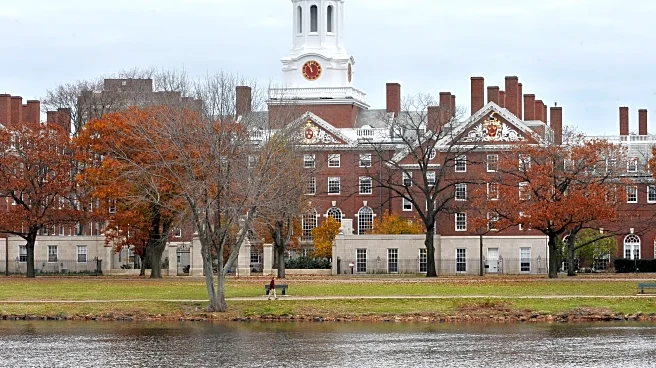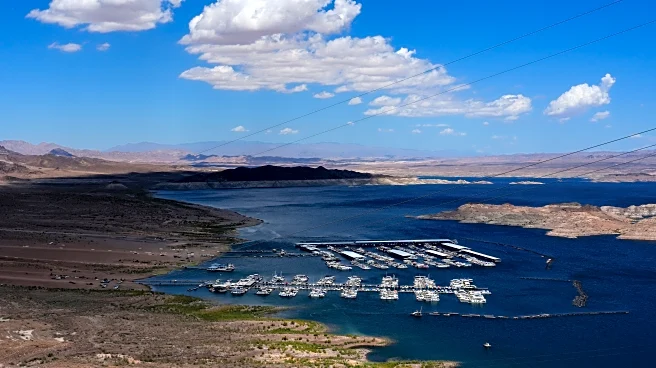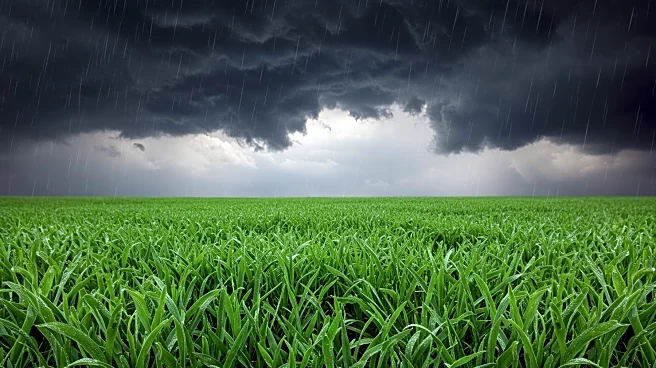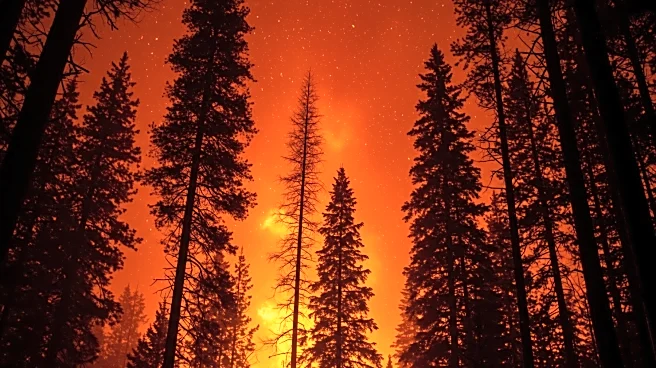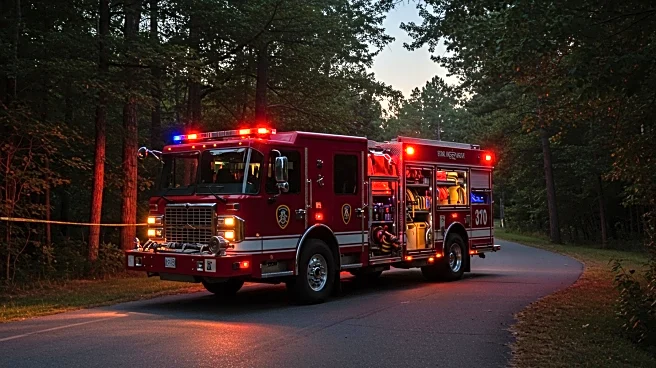Rapid Read • 8 min read
The Lee Fire in northwest Colorado has burned over 133,000 acres, making it the second-largest wildfire currently active in the United States and the fifth-largest in Colorado's history. The fire, which began on August 2 due to a lightning strike, is exhibiting extreme and unprecedented behavior, posing significant challenges to firefighting crews. The Rocky Mountain Complex Incident Management Team 3, led by section operations chief Tyler Nathe, is managing the fire, which is fueled by historically dry vegetation and persistent high winds. The region is experiencing exceptional drought conditions, with little to no rainfall in recent months, exacerbating the fire's intensity and spread.
AD
The Lee Fire's behavior highlights the growing impact of climate change on wildfire patterns, with increased variability in weather systems leading to more frequent and severe fires. The lack of monsoon rains, higher winds, and hotter temperatures are contributing factors, according to ecologist Laura Dee from the University of Colorado, Boulder. These conditions are pushing ecosystems beyond their historical fire-adapted states, increasing vulnerability. The fire's impact on local communities and ecosystems underscores the urgent need for climate adaptation strategies and improved fire management practices.
Firefighters are preparing for an extended fire season, with federal forecasts predicting below-normal precipitation and higher temperatures over the next three months. While some moderating conditions, such as increased humidity and potential rain, are expected, the long-term outlook remains challenging. The incident management team continues to adapt its strategies to address the fire's unpredictable behavior, learning from the unique challenges presented by the Lee Fire.
The Lee Fire serves as a stark reminder of the broader implications of climate change on natural disaster management. As ecosystems become more susceptible to extreme weather events, there is a pressing need for comprehensive climate policies and community resilience planning. The fire's impact on local sagebrush and pinyon-juniper woodlands, which are typically fire-adapted, illustrates the shifting dynamics of natural habitats in the face of climate change.
AD
More Stories You Might Enjoy


